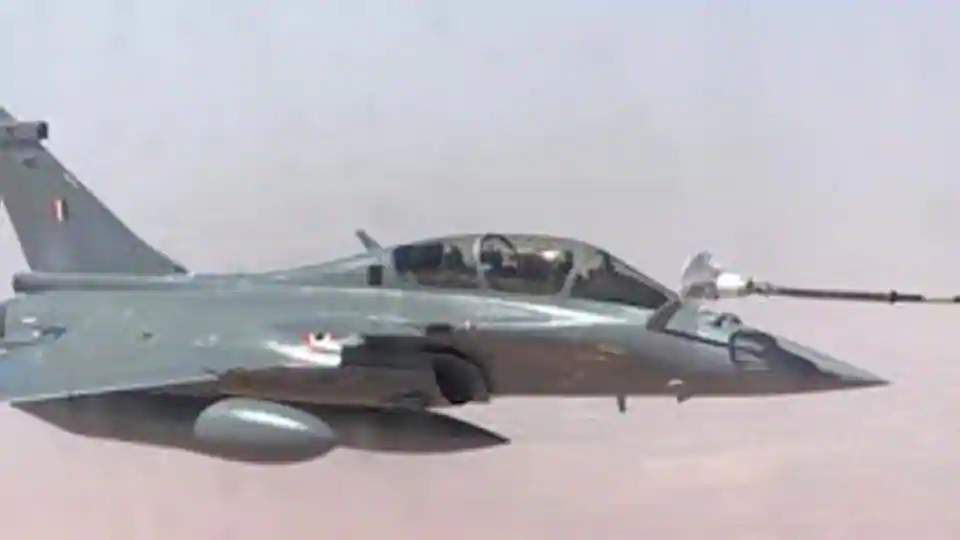
SOURCE: HT
Five Rafale fighter jets of the 36 ordered by the Indian Air Force (IAF) from France will land at their home base in Haryana’s Ambala on Wednesday. The new aircraft will significantly enhance the offensive capabilities of IAF, which has for long-planned to update its fighter jet force. Defence experts have said the induction of the controversial Rafale fighter jets will be a “game-changer” for India in regional politics of South Asia.
France has expedited the deliveries of Rafale fighters to India and five jets are coming to Ambala instead of four that were originally planned to be delivered in the first batch.
Here’s how the Rafale fighter aircraft will add to IAF power:
* Rafale, categorised as a 4.5 generation aircraft for its radar-evading stealth profile, is important for IAF since most of the aircraft in its fleet, including the Mirage 2000 and the Su-30 MkI, are classified as either third or fourth-generation fighters.
* The Rafale is a twin-jet fighter aircraft able to operate from both an aircraft carrier and a shore base. The manufacturers describe it as a fully versatile aircraft which can carry out all combat aviation missions to achieve air superiority and air defence, in-depth strikes, reconnaissance, anti-ship strikes and nuclear deterrence.
* The first Rafale combat aircraft manufactured for India bears the tail number RB-01, the initials of IAF chief Air Chief Marshal RKS Bhadauria. The IAF chief had played a crucial role in the signing of India’s biggest-ever defence deal worth about Rs 60,000 crore.
* India had ordered 36 Rafale fighter jets from France in a deal worth about Rs 60,000 crore in September 2016. Out of the 36 Rafale aircraft, 30 will be fighter jets and six will be trainers. The trainer jets will be twin-seater and they will have almost all the features of the fighter jets.
* The Rafale jets will be a crucial enhancement to India’s Medium Multi-role Combat Aircraft fleet.
* The Rafale fighter jets have been tailor-made for the Indian Air Force. India-specific enhancements include helmet-mounted sight, radar warning receivers, flight data recorders with enough storage for 10 hours of data, infrared search and track systems, jammers, cold engine start capability to operate from high-altitude bases and towed decoys to lure incoming missiles away.
* They will be the first imported fighter jet to be inducted into the IAF in 22 years after the Russian Sukhoi-30 fighters. The first Su-30 entered IAF service in June 1997.
* The Rafales will be a part of the IAF’s No 17 Squadron, which is also known as the “Golden Arrows”. The first squadron of the aircraft will be stationed at Ambala air force station, considered one of the most strategically located bases of the IAF. The second squadron of Rafale will be stationed at Hasimara base in West Bengal.
* The IAF spent around Rs 400 crore to develop infrastructure like shelters, hangars and maintenance facilities at the two bases.
* India will be the fourth country, after France, Egypt and Qatar, to fly the Rafale.
* The Rafale fighter jet, however, cannot be compared with the J-20, an indigenously developed fifth-generation aircraft of China. The J-20 is soon set to be inducted in large numbers into the People’s Liberation Army Air Force of China after it was successfully developed and displayed.
* The 2016 Rafale deal was an emergency purchase to arrest the worrying slide in the IAF’s combat capabilities. The count of the IAF’s fighter squadrons had been reduced to 31 compared to an optimum strength of 42-plus units required to fight a two-front war with China and Pakistan.
* The first 18 jets, including the four in the first batch, were to be delivered to the IAF by February 2021, with the rest expected by April-May 2022, according to the original delivery schedule.






